Elbow Arthroscopy

Also known as minimally invasive surgery or keyhole surgery, elbow arthroscopy operation is done through very small incisions. The surgeon makes tiny incisions to examine, evaluate and even treat several elbow injuries.
Elbow arthroscopy is usually performed under general anesthesia. Once the incisions have been made, the orthopedic surgeon inserts the arthroscope in one of the incisions. At the same time, the surgeon fills the elbow with the fluid to enhance visibility inside the elbow. The fluid also minimizes the risks of the blood vessel and nerve injuries during surgery.
Images of the elbow joint and other structures from the arthroscope are normally displayed on the monitor. Through these images, your surgeon is able to examine vital parts of the elbow joint.
Small surgical instruments are also inserted through incision sites to repair the damages. These surgical instruments enable the doctor to remove loose pieces of bone, debris, and bony spurs. At the end of the surgical procedure, the surgeon uses sutures to close the incisions carefully.
Orthopedic surgeon Dr. Christopher R. Sforzo at Sforzo | Dillingham | Stewart Orthopedics + Sports Medicine can handle your injured elbow professionally. You can benefit from different orthopedic surgical services, from endoscopic carpal tunnel surgery to arthroscopic rotator cuff treatment all the way to arthroscopic elbow and wrist procedures.
Elbow Arthroscopy Anatomy

Your elbow joint is best described as a complex articulation consisting of up to three bones. In other terms, the elbow joint is simply a hinge joint complete with around two types of motions which are:
- Flexion extension
- Rotations
As the advancement of instrumentations takes place, knowledge about surgical skills, surgical anatomy, and elbow arthroscopy has gradually become a reliable tool for treating a wide range of injuries and disorders. This knowledge allows orthopedic surgeons to treat their patients with minimum complications and risks. Elbow arthroscopy plays a significant role in the treatment and management of ligament injuries or disabilities that come with it.
An elbow joint has about three major neurovascular bundles. They include the radial nerves on the posterolateral side, median nerves on the posteromedial aspect, and ulnar nerve with brachial vessels located anteriorly.
Dr. Christopher R. Sforzo at Sforzo | Dillingham | Stewart Orthopedics + Sports Medicine can handle arthroscopy surgery professionally. The recommended doctor is a board-certified orthopedic surgeon that provides expert care for elbow, forearm, arm, shoulder, and hand surgery. Additionally, he performs arthroscopy procedures on your elbow using minimally invasive surgical techniques.
When is Elbow Arthroscopy performed?

Elbow arthroscopy surgery is an ideal treatment option since it offers tiny incisions, less scarring compared to traditional open surgery, and shorter recovery times.
Elbow arthroscopy is applicable when performing a simple manipulation of the elbow joint such as:
- Fracture care
- Debridement of the loose torn cartilage tissue or bone chips
- Removal of debris and scar tissue
- Removal of broken bone fragments
Generally, an elbow arthroscopy procedure is used to confirm or examine any abnormalities that might be in your elbow joint. This type of medical examination provides the much-needed diagnosis of different elbow joint conditions.
Arthroscopy is also applicable in the treatment of conditions such as rheumatoid arthritis, osteoarthritis, and osteochondritis.
Reach out to Dr. Sforzo and Dr. Dillingham at Sforzo | Dillingham | Stewart Orthopedics + Sports Medicine for consultation, diagnosis, and treatment of your injured elbow joint. Both doctors are board-certified orthopedic surgeons and fellowship-trained to handle complex surgery of the shoulder, elbow, arm, and hand.
They also specialize in meniscal injuries, partial knee replacement, knee arthroplasty, and total hip replacement, including complete fracture care. Furthermore, they perform procedures that include arthroscopic surgery of elbow joints, wrists, and shoulders, not to mention endoscopic carpal tunnel surgical operations.
Elbow Arthroscopy Diagnosis

Elbow arthroscopy diagnosis helps your caregiver know the extent of your elbow injury and which treatment option to apply. Your surgeon will also take some time to evaluate and review your medical history. Thereafter, the surgeon will proceed to carry out a complete physical examination of your broken elbow joint.
If needed, the doctor may order you to undergo X-ray, MRI, or EMG tests to rule out the possibility of other health conditions.
- X-ray
With an X-ray test, the surgeon will be able to see the detail of the broken elbow. An X-ray uses a form of radiation known as electromagnetic waves. These radiations create images of the inside of your elbow joint and will certainly show your doctor the nature of your injury.
- MRI
In full, MRI is magnetic resonance imaging. It is an imaging technique designed to use a powerful magnetic field that combines with computer-generated radio waves to produce three-dimensional detailed anatomical images of your injured elbow joint.
- EMG
Commonly referred to as electromyography, EMG is another diagnostic test that orthopedic surgeons use to assess the condition of muscles, ligaments, nerves, and tendons inside the body. EMG can show nerve dysfunction, muscle dysfunction, or issues affecting nerve-to-muscle signal transmission.
This medical technique uses electrodes to translate electrical signals transmitted by motor neurons into sounds, graphs, or numerical values. Your physician uses these values to interpret the results before performing an arthroscopy of the elbow.
Elbow Arthroscopy Treatments

Your elbow arthroscopy treatment may involve nonsurgical treatment methods or surgical treatment options.
- Nonsurgical Treatment
The non-surgical form of treatment requires you to have enough rest, take medications to relieve pain, or turn to physical therapy to speed up your elbow surgery recovery time. Your doctor may also encourage you to try steroid injections, wear braces and use platelet-rich plasma. Extracorporeal shock-wave therapy and equipment check when working or exercising is also recommended. Connecting with Dr. Christopher R Sforzo at Sforzo | Dillingham | Stewart Orthopedics + Sports Medicine will give you the right advice and help you treat your elbow with the appropriate treatment.
- Surgical Treatment
Surgical treatment may come in handy if nonsurgical treatment does not show positive results within six to 12 months. In this case, arthroscopic surgery of your elbow should be the only option left.
Elbow Arthroscopy Surgery Procedure
During the arthroscopy surgical procedure, Dr. Christopher R. Sforzo at Sforzo | Dillingham | Stewart Orthopedics + Sports Medicine, an orthopedic surgeon, will insert an arthroscope (a tiny soft and flexible tube with a video camera and light at the end) into your elbow joint. The arthroscope will enable the doctor to evaluate, assess and treat the damaged tendons and bones.
As an outpatient procedure, elbow arthroscopy surgery is performed under general anesthesia. Your physician will place you in a prone or lateral position for easy and quick adjustment of the arthroscope to have a clear view of your elbow’s interior.
The best thing about an elbow arthroscopy surgery procedure is that it involves:
- Smaller incisions
- Less postoperative pain
- Minimal soft tissue trauma
- Lower infection rate
- Faster healing time
Post-operative Care after Elbow Arthroscopy Surgery

Postoperative care following the successful arthroscopy surgery of your elbow may include the following:
- Have adequate rest
- Raise the elbow on pillows and above your chest to reduce swelling and pain
- Maintain cleanliness and dryness around the incision area
- Use a comprehensive stocking from your armpit to the forearm to reduce pain and swelling while increasing the range of motion
- Take medications as prescribed by your doctor to keep your elbow comfortable
- Turn to physical therapy in order to restore your normal elbow strength
- Take a healthy diet to promote faster healing
Arthroscopic elbow surgery is one of the minimally invasive surgical procedures. It is mainly used to diagnose, treat or repair injuries of the elbow joint including arthritis or golfer’s/tennis elbow. If you want to learn more about arthroscopic surgery of the elbow, contact Sforzo Dillingham I Stewart Orthopedics + Sports Medicine.








